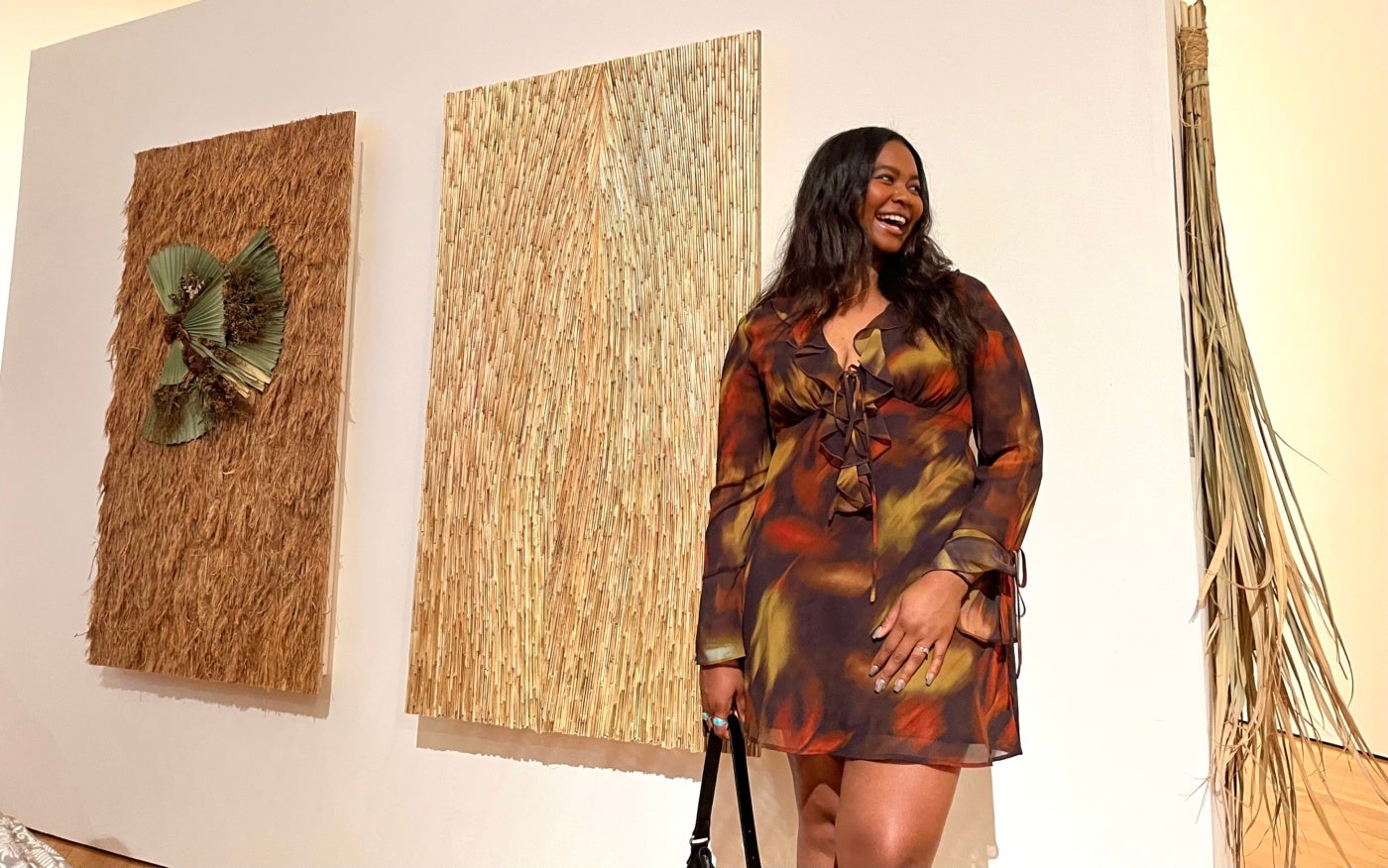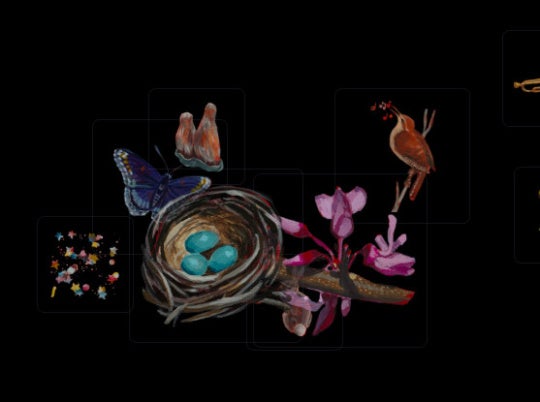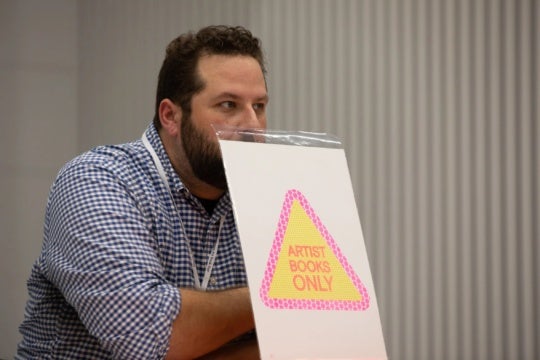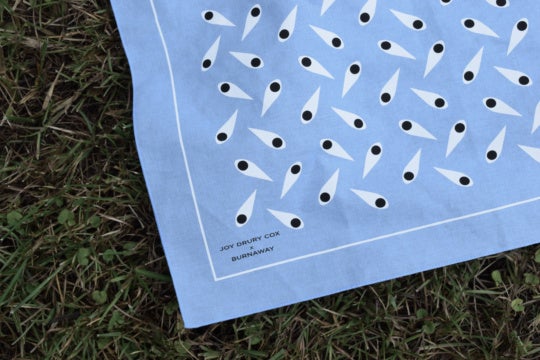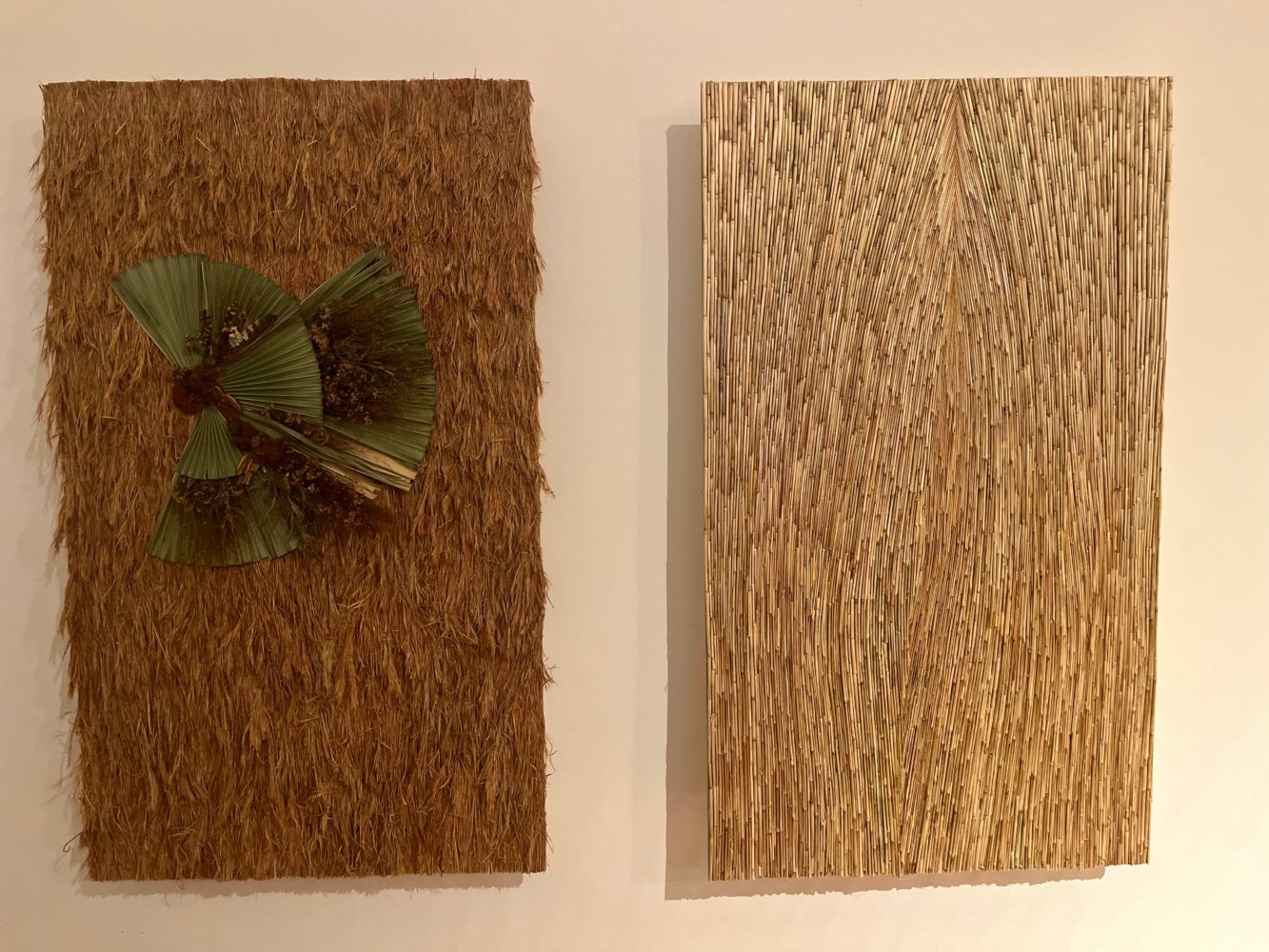
Historically, land meant everything to Louisianans. Diverse groups of people have existed in Louisiana for much longer than the three centuries of the colony’s existence. Indigenous peoples such as the Natchitoches Tribe of Louisiana and the Chitimacha were here thousands of years before colonization. Sponsored by Jones Walker LLP, the exhibition Prairie Stories: Art and Ecological Restoration on Louisiana’s Prairies focuses on the ecological and historical importance, cultural significance, and current state of Louisiana’s prairie regions.
The exhibition, located at the Acadiana Center for the Arts in Downtown Lafayette, Louisiana, shares the power of ecological restoration of prairies in Louisiana Prairie Stories is surrounded by the works of 17 featured artists, including Maaliyah Symoné, Ashlee Wilson, Atakapa-Ishak Nation tribal member Dr. Jeffery U. Darensbourg, Nant’a (Chief) Cougar Goodbear, Caroline Delahoussaye, and others.
Prairie Stories shares the powerful connections between art, activism, nature, and storytelling. Nature is an interconnected continuum. Indigenous peoples throughout the world understood how to work with the Earth and not against it. The Prairie Stories exhibit ignites powerful sacred energy from natural artifacts, storytelling, paintings, and more in ACA’s spacious main gallery.
I briefly interviewed Louisiana Creole and Atakapa-Ishak Nation tribal member, Maaliyah Symoné, who said, “It’s important for humans to collaborate with mother nature because we can never be separated from nature, no matter what the systems tell to us.”
Upon entrance, the Canneci Tinné Tribe’s artifacts, maps, and artwork steal immediate attention. A handmade piece titled, Cypress Knee Drum by Chief Goodbear displays, according to Goodbear, the second Cypress Knee Drum in existence. Made with cypress knee and stretched hides, this piece accentuates how Indigenous peoples use nature to create music.
According to the Louisiana State University Museum of Natural Science, bison, greater prairie chickens, wild whooping cranes, grassland, and indigenous plants abundantly roamed southwest Louisiana. Indigenous peoples developed sustainable ways of interacting with the land, such as controlled burns and resource stewardship, that supported ecosystems for generations. But, through colonization, European settlers and later industries transformed natural landscapes for agriculture, settlement, and, eventually, oil extraction.
“The prairie lands definitely have a memory. Everything that’s always happened before time is continuing in the prairie now,” Symoné said.
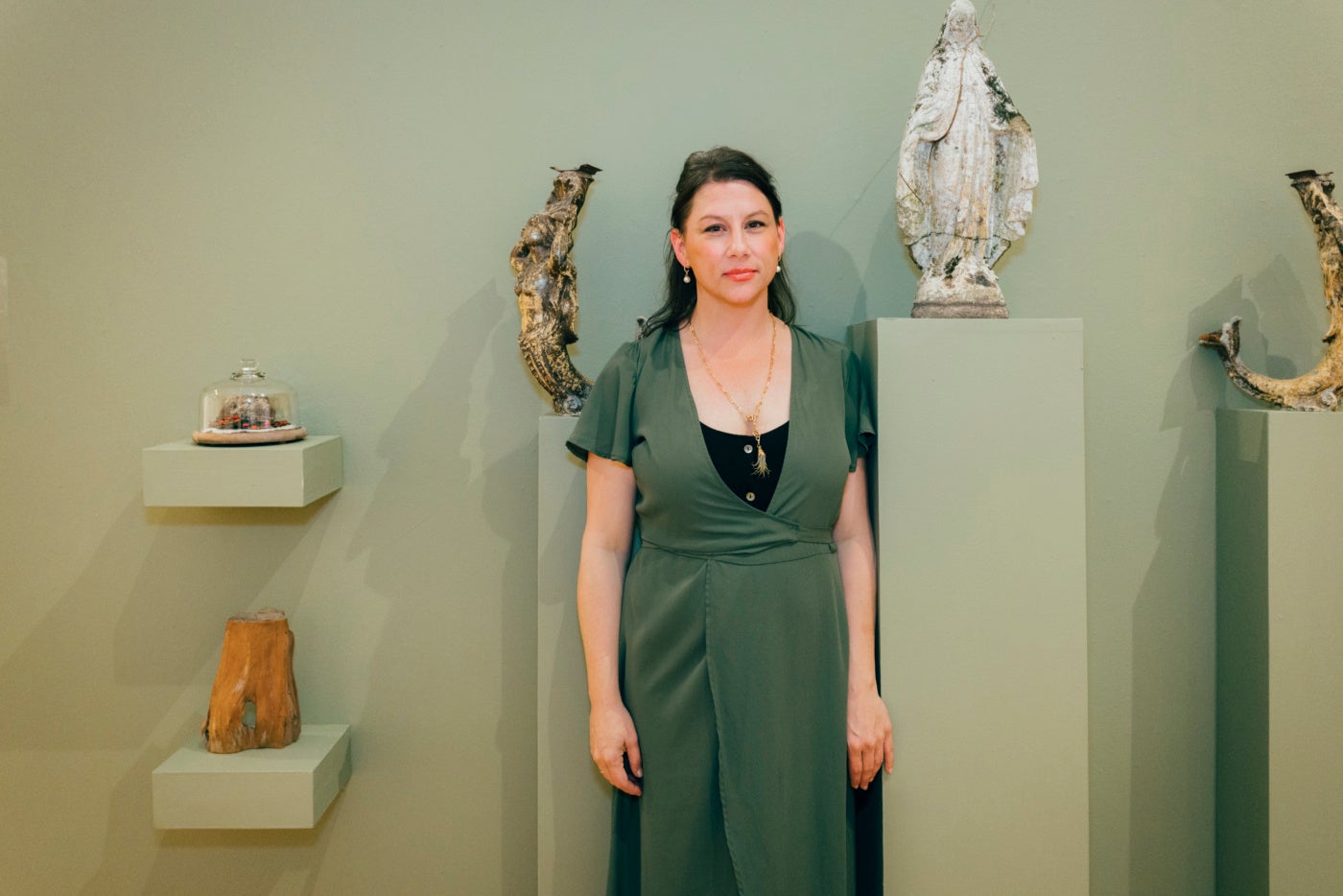
The art of utilizing the natural elements results in sincere storytelling. In a collaborative visual arts and science installation, Symoné and Rush Jagoe explore and connect nature and multimedia art. A mesmerizing piece titled, Prayer Fans utilizes palmetto leaves, reishi and various mushrooms, native prairie plants, vinéraire, manglier, and adhesive. Many featured artists incorporated aspects of nature into their artwork, displaying the power of interconnectedness and animism.
“I was working with the prairie materials, I just thought about like my ancestors that lived here that died on this land that went into the ground and grew up into plants.” Symoné said, “And so I definitely felt that ancestral connection and guidance through the plants because some of my family members, my ancestors, all of our ancestors have transformed into natural ingredients that I’m now our natural materials that I’m now using in my art.”
Louisianans have struggled to persuade the state government to choose the environment and people over policy and money for decades.
Ashlee Wilson, a Louisiana native, folk herbalist, musician, and writer, is doing her part to keep Louisiana’s horticulture within the community. Her “Prairie des Femmes” installation and Traiteur (faith-based treater/healer) display acknowledge the importance of Indigenous plants and peoples. In addition, her Traiteur artworks animate and display the essence of treating in South Louisiana, including an Our Lady of the Assumption statue, smudging, journaling, plants, crystals, and much more.
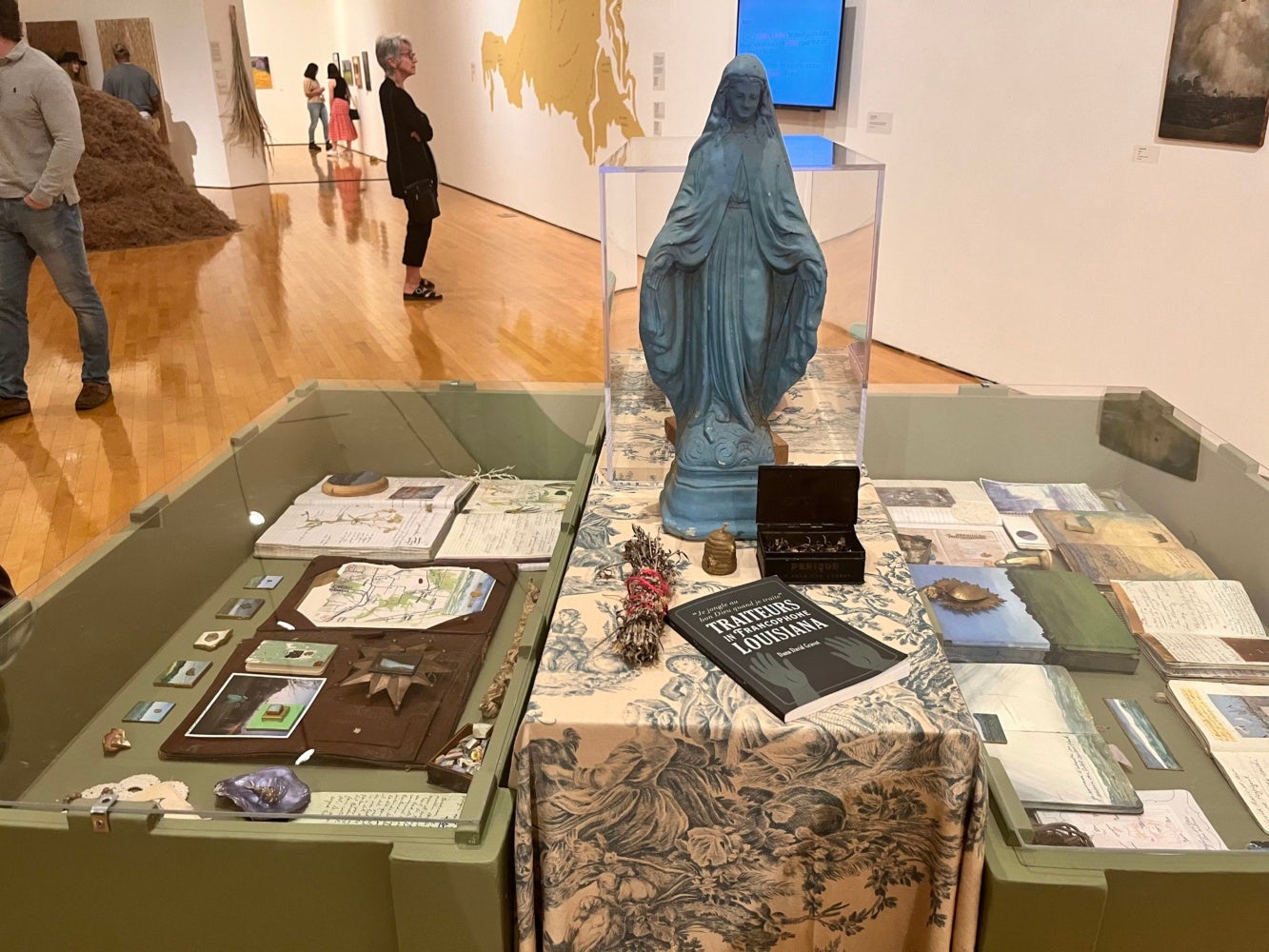
Scientists, naturalists, and artists are also restoring and rebuilding prairie sites with collectives like the Cajun Prairie Restoration Project, Atelier de la Nature, Eco-Campus, the Acadiana Native Plant Project, and more.The Prairie Stories exhibit explores history, plants, natural art, thousand-year traditions, Indigenous culture, and solutions to reconstruct Louisiana’s prairie ecosystem.
Symoné left me with this:
“You don’t have to have all these big fancy materials, a big studio, a super huge, established career to be an artist. I just went to my friend’s backyard and harvested these plants and then made art out of it, so I just hope that that encourages people to get into their creativity no matter where they are.”
